The Innovators: Stax Artist Spotlights
Otis Redding
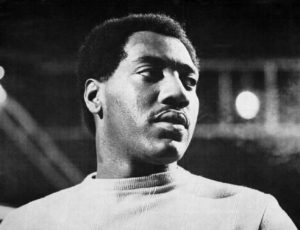
Otis Redding, courtesy of Atlantic Records.
In just four short years, Otis Redding cemented his place in history as one of the greatest singers of all time—deftly blending soulful emotion with a touch of grit. A prolific songwriter and electrifying performer, Redding released six studio albums and more than two dozen singles during his lifetime, selling out shows across North America and Europe. At a time when the radio waves—and much of the United States—were still heavily segregated, Redding became one of the country’s highest-grossing acts, while bridging the divide between soul music and the burgeoning counterculture movement. Tragically, just as Redding’s career was reaching its pinnacle, the 26-year-old’s life was cut short in a plane crash. Yet, more than half a century later, his immeasurable legacy shines just as bright.
Born in Dawson, GA, in 1941 and raised in Macon, Redding’s talents were apparent early on. As a child, he sang in his church’s choir and performed gospel songs every Sunday on the radio. A few years later, he gained recognition by becoming the long-running champion of a local talent contest. It was there that the teenager met guitarist Johnny Jenkins, who enlisted Redding to front his band.
Redding also moonlit as Jenkins’ driver. In August 1962, he chauffeured his bandmate to a demo session at Stax Records. While Jenkins failed to make an impression, the fledgling label allowed Redding to perform an original song of his, called “These Arms of Mine.” Needless to say, the entire room was impressed and the 20-year-old singer had a recording contract in hand by the end of the week. The song was released as a single that fall, selling more than 800,000 copies. It would become one of Redding’s most successful releases and one of Stax’s first big hits.
Redding continued to build momentum with singles like “Security” and “Pain in My Heart,” which also marked the title track of his 1964 debut album. The following year, he scored his first Top Ten R&B hit with “Mr. Pitiful,” and landed at the top of the R&B album charts with his third LP, Otis Blue/Otis Redding Sings Soul. Regarded as some of his best work, Otis Blue earned the artist a strong fanbase in the UK (where the album hit No.6) and helped him cross over into the pop market at home. It also featured two of his most important compositions: the emotional “I’ve Been Loving You Too Long” (co-written with Jerry Butler) and “Respect,” in which the narrator tells his woman that she can do whatever she wants when he’s not there, but pleads with her to stay with him when he gets home. Two years later, Aretha Franklin reworked the song, turning it into an iconic, GRAMMY®-winning feminist anthem—and a No.1 hit.
By 1966, Redding was one of soul music’s biggest stars—but he sought to expand his audience. That spring, he shrewdly booked a three-night residency at Los Angeles’ Whisky A Go Go—a venue that was known for its rock shows. The weekend-long gig on the Sunset Strip introduced Redding to the city’s bohemian scene and many of its stars, including Bob Dylan, Van Morrison and Robbie Robertson, who recalled, “he sang with such power and passion it took your breath away…it was a night I’ll never forget.”
The following year, Redding appeared on stage at the Monterey Pop Festival, where he shared a billing with Jimi Hendrix, the Who and the Mamas & the Papas. Backed by Stax’s house band, Booker T. & the M.G.’s, Redding captivated the audience with his energetic performance. It was a turning point for the soul artist and a barrier-breaking moment in pop culture history.
Redding’s star power was even stronger across the Atlantic. By the mid-60s, he had toured Europe and the UK multiple times, and 1967’s Otis Redding: Live in Europe—recorded at a packed show in Paris—captures that overwhelming enthusiasm. Also that year, Redding released a duet album, King & Queen, with one of Stax’s other big stars, Carla Thomas. The LP became another top seller, earning a Gold record and producing the hit single “Tramp.”
In between tour dates, on December 7, 1967, the busy artist met with Steve Cropper to record “(Sittin’ On) The Dock of the Bay.” The song—which was a stylistic shift for Redding—had come to him after his performance at Monterey Pop, while he was staying on a houseboat in Sausalito, CA. Heartbreakingly, it would be his final session. Three days later, Redding’s plane crashed on route to a show in Madison, WI. The artist was killed along with four members of his backing band, the Bar-Kays. The group’s valet and the plane’s pilot also perished. It was a devastating loss that reverberated around the world.
Just weeks later, Stax released “(Sittin’ On) The Dock of the Bay.” A stunning memento of Redding’s talent, the posthumous release hit No.1 on the Billboard Hot 100—marking the artist’s first time at the top of the chart. The following year, the song earned a GRAMMY®.
Among his many tributes over the decades, Redding was inducted into the Rock and Roll Hall of Fame in 1989 and the Songwriters Hall of Fame in 1994. The USPS celebrated Redding with a postage stamp, while in 1999, Redding’s work was honored with a GRAMMY® Lifetime Achievement Award.
While it’s tempting to wonder what sort of heights Redding’s career could have reached, it’s important to appreciate what he left behind. In addition to his incredible catalog of music, Redding was also remembered as an incredibly kind and humble man who was devoted to his wife and children. In Robert Gordon’s Respect Yourself: Stax Records and the Soul Explosion, Cropper recalled that “Everybody loved him…He was always on time, always together, loved everybody, and made everybody feel great.” His showmanship and evocative delivery, meanwhile, left their imprint on the industry. Stax executive Al Bell perhaps put it best, calling Redding “that superstar that you always dream of working with…You felt him. You heard the tear in his voice.”
STAX FAX
- Redding was a massive Little Richard fan and cited the rock ’n’ roll pioneer as his impetus for getting into music. Interestingly, Redding briefly performed with Richard’s backing band, the Upsetters, after the elder star left to pursue a gospel career.
- Redding’s propensity for downtempo balladry earned him the nickname “Mr. Pitiful” from Memphis radio DJ A. C. Moohah Williams. But the budding star had the last laugh. Using the moniker as inspiration, Redding and Steve Cropper wrote “Mr. Pitiful,” which became Redding’s first Top 10 R&B single. The tune was later covered by the likes of Etta James, the Rolling Stones and Taj Mahal.
Essential Tracks
These Arms of Mine
I've Been Loving You Too Long
(Sittin' On) The Dock of the Bay
READ MORE
“In Memory of Otis Redding and His Revolution” | New Yorker, 2017
“Inside Otis Redding’s Final Masterpiece ‘(Sittin’ On) the Dock of the Bay’” | Rolling Stone, 2017
The Innovators: Stax Artist Spotlights ARCHIVE
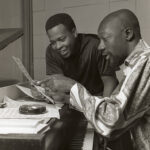
Stax Records — After 1975
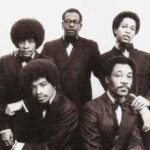
Ollie & The Nightingales
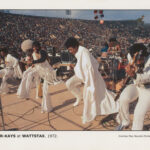
The Bar-Kays

24-Carat Black

The Temprees
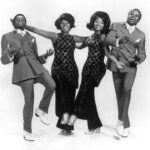
The Soul Children

The Mar-Keys

Delaney & Bonnie

Stax Groups – The Astors, Jeanne & The Darlings & the Charmels

The Mad Lads

The Dramatics

The Emotions

Johnnie Taylor
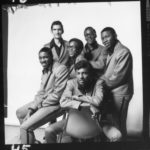
The Bar-Kays

Otis Redding

The Dramatics
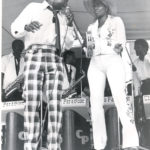
RUFUS & CARLA THOMAS
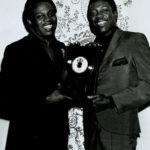
Sam & Dave

The Emotions


